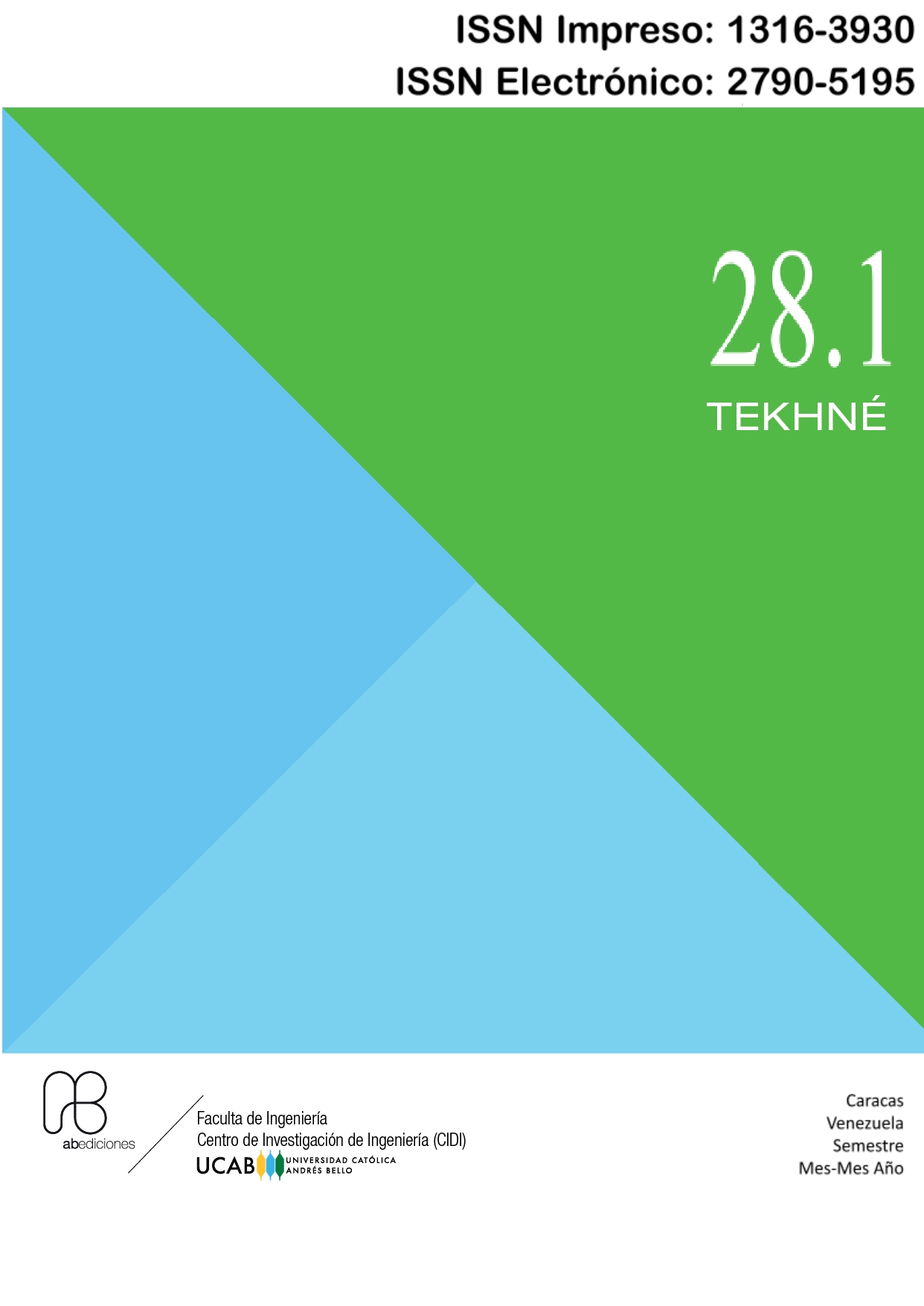Analysis of optimal asphalt cement content in asphalt mixtures modified with recycled polypropylene
DOI:
https://doi.org/10.62876/tekhn.v28i1.6572Keywords:
Pollution, Recycled polypropylene, Modified asphalt mixture, Optimal asphalt cement percentage, Environmental gainAbstract
Abstract
With demographic and industrial growth, products are presented in thermoplastic packaging obtained from organic substances derived from petroleum such as polypropylene. These containers are not returnable, causing the appearance of environmental liabilities in landfills. For this reason, there is a need to give appropriate use to plastic once recycled, incorporating it as part of asphalt mixtures. In this sense, this research aimed to determine the optimal asphalt cement content through the Marshall Method and the criteria of the National Asphalt Pavement Association, evaluating the behavior of three hot dense asphalt mixtures of Type IV, M9 and M19; modified with recycled polypropylene as a substitute for 7 % of the stone aggregates retained in sieves No. 8 and 30 in the Type IV mixture and No. 8 and 50 in sieves M9 and M19. Finally, the index properties and their compliance with current regulations were evaluated, as well as the variation in the optimal asphalt cement content between the original and modified mixtures. Concluding with the acceptance of mixtures, which can be used in the construction of flexible pavements.
Keywords: Pollution, Recycled polypropylene, Modified asphalt mixture, Optimal asphalt cement percentage, Environmental gain.
Downloads
References
Vidal C. “Degradación del plástico”, 2008.http://www.ecoclimatico.com/archives/degradacion-del-plastico-137[
Huanacuni Yaja M.“Influencia del uso plástico reciclado con grafeno en las propiedades de la carpeta asfáltica Av. Mariano Urquieta, Moquegua”, Universidad César Vallejo,2024.https://hdl.handle.net/20.500.12692/136612
Conya Ascue J.“Uso de stone mastic asphalt modificada con pet y nanosílice para el desempeño de la carpeta asfáltica Av. Cultura, Cusco 2023”. Universidad César Vallejo,2024.https://hdl.handle.net/20.500.12692/138599
Cabezas López C. D. y Ramírez Pinzón D. A.“Estudio del comportamiento mecánico de una mezcla asfáltica modificada mdc-19 con desechos de pitillos de polipropileno”, Universidad Santo Tomás, 2023.http://hdl.handle.net/11634/54149
Coyo Quispe E.“Análisis y evaluación del comportamiento de mezclas asfálticas modificadas con material proveniente de parachoques de vehículos (bumper)(Doctoral dissertation)”,Universidad Mayor de San Andrés,2019. http://repositorio.umsa.bo/xmlui/handle/123456789/34688
Briceño J. yGonzález G.“Estudio de las propiedades índices de mezclas asfálticasen caliente incorporando material reciclado de poliestireno”. Avances y Retos de La Ciencia y La Ingeniería. Libro-Capitulo 11. Facultad de Ingeniería, Universidad de Los Andes. Pontificia Universidad Católica del Ecuador, sede Ibarra. 104-112, 2017. https://www.researchgate.net/publication/334114432_estudio_de_las_propiedades_indices_de_mezclas_asfalticas_en_caliente_incorporando_material_reciclado_de_poliestireno
Briceño J.,Omaña J. y Verjel V.“Estudio del contenido de cemento asfáltico óptimo en mezclas asfálticas densas en caliente modificadas con poliestireno reciclado”, Revista Ciencias e Ingeniería, Universidad de Los Andes, Venezuela, vol. 41, no3, 265-274, ISNN 1316-7081, ISNNElect. 2244-8780, 2020.http://erevistas.saber.ula.ve/index.php/cienciaeingenieria/article/view/16409
Sánchez E.y González G., “Comportamiento de mezclas asfálticas densas en caliente modificadas con material reciclado de polipropileno”. Tesis Magister. Universidad de Los Andes, Mérida Venezuela, 2016.
Norma venezolana COVENIN 2000:1987, “Sector construcción, especificaciones, codificación y mediciones. Parte 1: Carreteras”, Fondonorma, 1987.
Industrias reunidas S.A. de C.V. “Polipropipelo (PP)”, Ineos Olefins & Polymers USAand Ineos Olefins & Polymers Europe, 2018. https://www.irsa.com.mx/pp
Vidal C. "Degradación del plástico" ,2008. http://www.ecoclimatico.com/archives/degradacion-del-plastico-137
VivesA. "La sorprendente realidad de la contaminación del plástico", 2018. https://diarioresponsable.com/opinion/26172-la-sorprendente-realidad-de-la-contaminacion-del-plastico
World Wildlife Fond. “Lomas destacado de la conservación durante 2021”, 2021. https://www.worldwildlife.org/descubre-wwf/historias/lo-mas-destacado-de-la-conservacion-durante-2021
Instituto Venezolano del Asfalto, Normativa INVEAS-2004, 2004, http://es.slideshare.net/rosanalara1/versin-inveas-2004-asfalto.
Downloads
Published
How to Cite
Issue
Section
License
Copyright (c) 2025 Tekhné

This work is licensed under a Creative Commons Attribution-NonCommercial-ShareAlike 4.0 International License.




